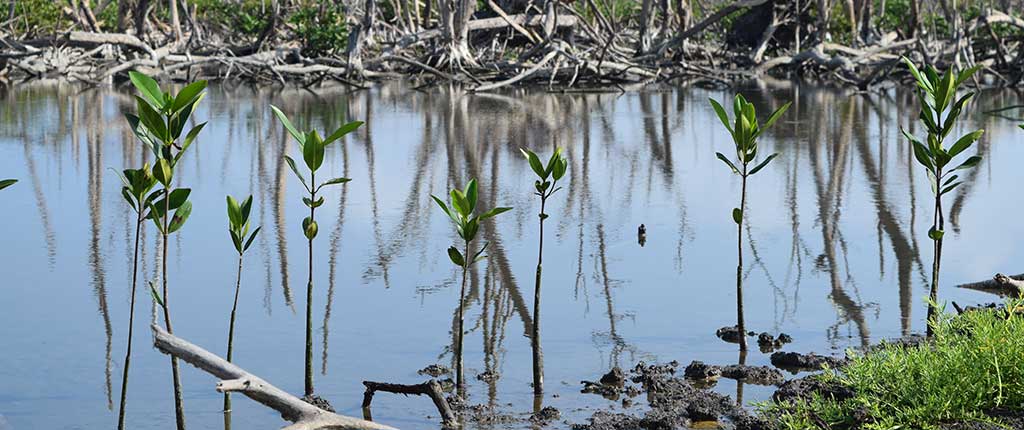
Colombia - El Magdalena: Biodiversity, strengthening communities and sustainable development
Driving from La Guajira towards the department of El Magdalena, the dry and barren landscape of the Colombian desert region fades away, giving way to a lush and green topography. Trees, rivers, swamps and lagoons characterize the landscape, which is crowned by the majestic snow peaks of the Sierra Nevada. The Magdalena River was the setting for Garcia Marquez's novel "Love in the Time of Cholera," and its magic lives on more than thirty years later.
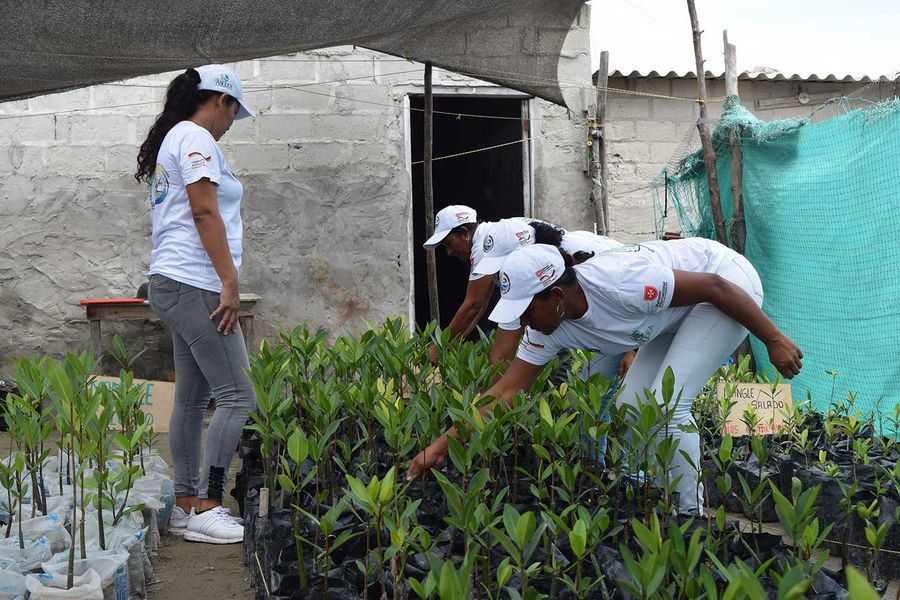
The Wayuu - the largest indigenous group in La Guajira - are famous for their colorful woven bags, resilience and agricultural skills, which they use to withstand periods of drought and adverse environmental conditions. In El Magdalena, on the other hand, the Wiwa are the largest population group.
Unlike the Wayuu, who struggle with their harsh environment daily, the Wiwa can rely on lush vegetation and have a deep belief that the earth is a living being that must be protected at all costs. Happy children laugh and splash in the river, thowing stones that create gentle ripples in the crystal clear water. Their mothers' beaming smiles give them a sense of security, and the sparkling water gives them peace under the searing Caribbean sun. The soft flow of the river and the white peak of Sierra Nevada glistening in the distance. While nature is benevolent to man in this region, man-made developments such as hydroelectric projects, mining, and urban development have failed to take into account the land and the needs of indigenous communities, alienating them from the land they revere.
Santa Marta, a bustling port city with rich history, is the oldest city of Colombia and was founded by Spanish colonizers in 1525. Next to the colonial architecture and lively town center, the sleepy and arid neighboring department of La Guajira becomes a distant memory. However, this perception of wealth and opulence is fleeting - if you look just a little closer you'll see crowds of people clustered around a single water tank, desperately trying to gain access to a source of clean drinking water. The department of El Magdalena is struggling with its own problems: lack of access to basic services, violence and displacement. Human rights and environmental activists in the region face persecution, and some disappear forever.
Thriving biodiversity and its threats
The district of Santa Marta is famous for its diversity, its national parks, mountains and lagoons. The Cienaga Grande de Santa Marta, about an hour away from the city of Santa Marta, is the most important coastal lagoon of Colombia and since the year of 2000, a UNESCO biosphere reserve as well as a Ramsar site.
The meeting of the fresh waters of the Magdalena River and smaller tributaries from the Sierra Nevada with the salt waters of the Caribbean Sea has created the perfect ecosystem for one of the most biologically diverse environments in the country. The Cienaga is home to hundreds of species of fish, including the expensive Striped Mojarra and the famous Bocachico. Exotic birds, monkeys and more than 33 species of mammals contribute to the thriving ecosystem. It is also home to the largest mangrove forest in the Colombian Caribbean.
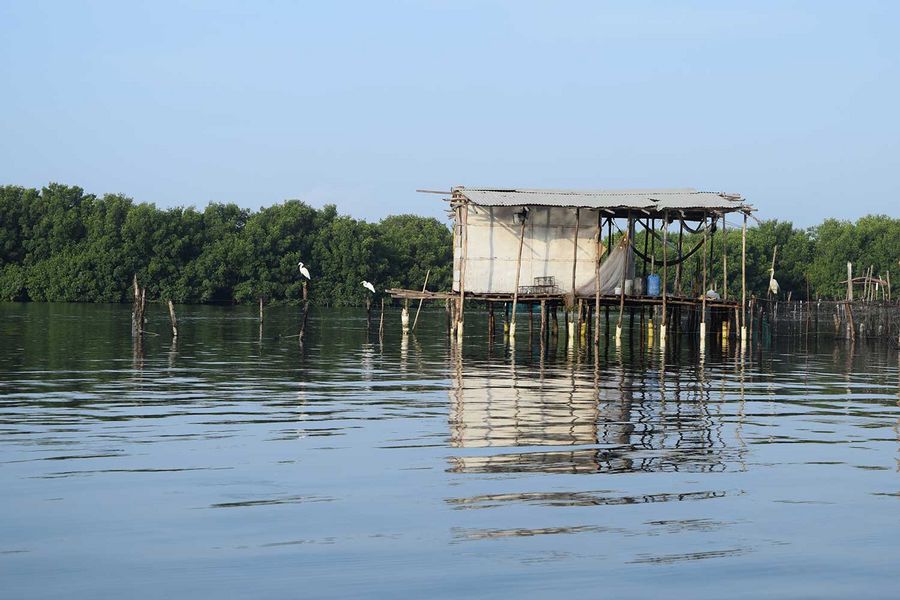
Nonetheless, the Cienaga witnessed the mass extinction of mangrove forests and a significant decline in fisheries resources - all caused by human activities. Farmers who needed water for their crops began building canals that diverted the natural flow of water and prevented the river and its tributaries from flowing into the Cienaga, reducing the inflow of freshwater into the lagoon and preventing the water from reaching the forest. Combined with the construction of a highway between Cienaga and Barranquilla in the 1950s, this has altered the natural flow of marine and freshwater and damaged the mangrove lagoon ecosystem. The effects on marine biodiversity within the Cienaga were catastrophic and led to wetland degradation, negatively impacting the population of the towns that depend on the Cienaga for their livelihoods.
"There used to be more than 500 species of fish, now there are about 100", says Jose Luis Garrido Nieve, member of the Asociación de pescadores artesanales amigos de cultivo (CRIAPEZ), a group of fishermen who have been fish farming on Isla del Rosario in Magdalena for 23 years. CRIAPEZ was founded in 1997 by fishermen to contribute to the development of their community and to improve the quality of the mangrove ecosystem.
When the environmental and social impacts on the economy are ignored during developmental projects, there will be unforeseen consequences. Thousands of hectars of mangroves have disappeared, endangered population groups, whose livelihoods depend on the Cienaga's ecosystem, have been persecuted and just barely get by. On top of that, they live in extreme poverty and carry the consequences of decisions they were not even included in. Vulnerable communities lack access to clean drinking water, their homes are built on landfills, and their existence is threatened by increasing coastal erosion, which could be prevented by a flourishing mangrove ecosystem. Entire indigenous groups are endangered.
"Together we must strengthen our committment towards the protection of the Cienaga's natural ecosystem. Our communities are economically dependent on the Cienaga. Their livelihoods rely on this ecosystem. If this ecosystem ceases to exist, these communities also cease to exist."
Jose Luis Garrido Nieve, founding member of CRIAPEZ
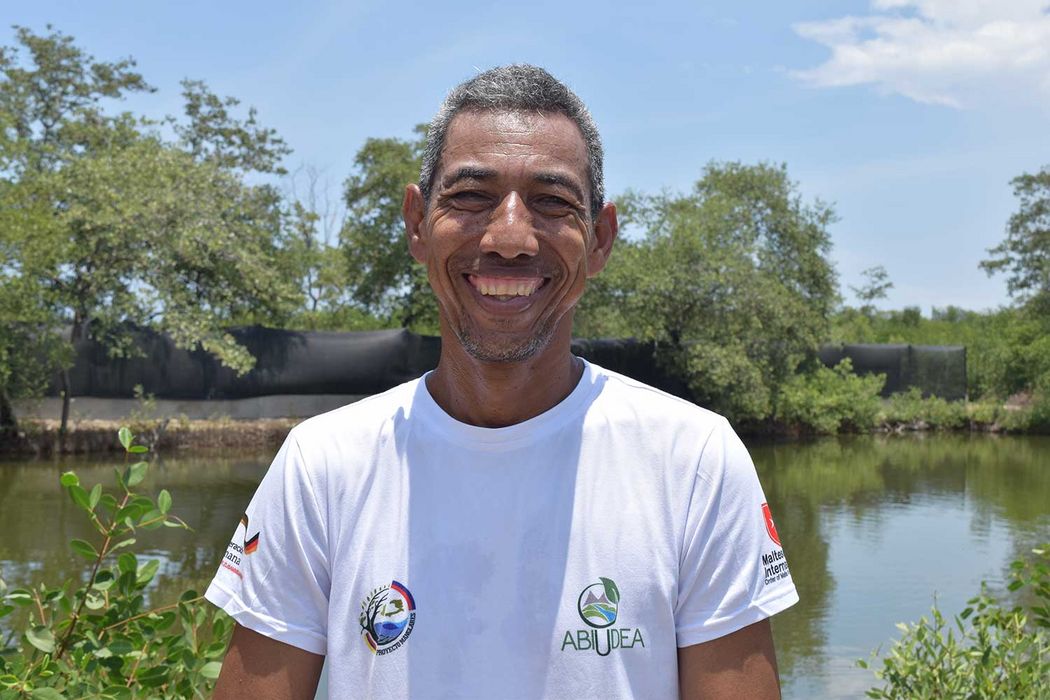
Mangroves: Malteser International plants seeds of hope
Since 2014, Malteser International Americas has been working in northern Colombia with the aim to restore vital ecosystems and protect these vulnerable populations. Developmental projects are inherently protracted and their effects are less immediate; however, small changes have a big impact over time and progress can be measured in various ways.
At the center of our project is forest restoration while raising environmental awareness and empowering local communities at the same time. We are working in three different locations with three different target groups to build mangrove nurseries, teach and build environmental expertise while simultaneously restoring mangrove ecosystems. In the city of Tasajera we are working alongside 22 single mothers and empower them to take action in the protection of their ecosystem and to offer a source of income and training. The training of mothers is in many ways important, as they pass on the knowledge to their children and other community members, and serve as an inspiring example to others. In the developmental aid sector, this is known as the "gender-multiplier-effect" for the community.
Mangrove restoration requires the formation of water canals in order to ease the flow of water, monitor the water level and foster growth. Our goal is to plant 33,000 seedlings from three tree nurseries and thereby restoring 30 hectar of mangrove forests.
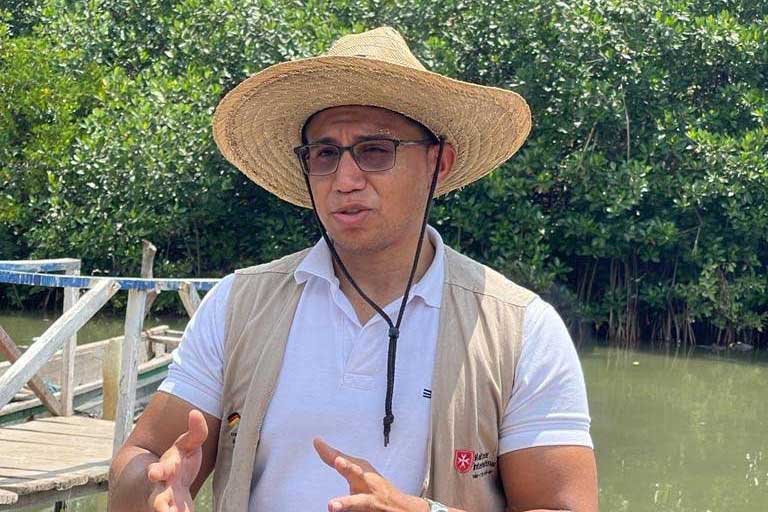
"There are both economic and environmental benefits. Economic because the people here depend on fishing and the reforestation of the mangroves will restore the fish population. This will feed the local population and the local economy. From an ecological point of view, the mangroves will act as a carbon sink and we will release more oxygen. These mangroves store ten times more carbon than a forest tree."
Frank Sarmiento, ABIUDEA
Recycling, ecotourism and a glance at the future
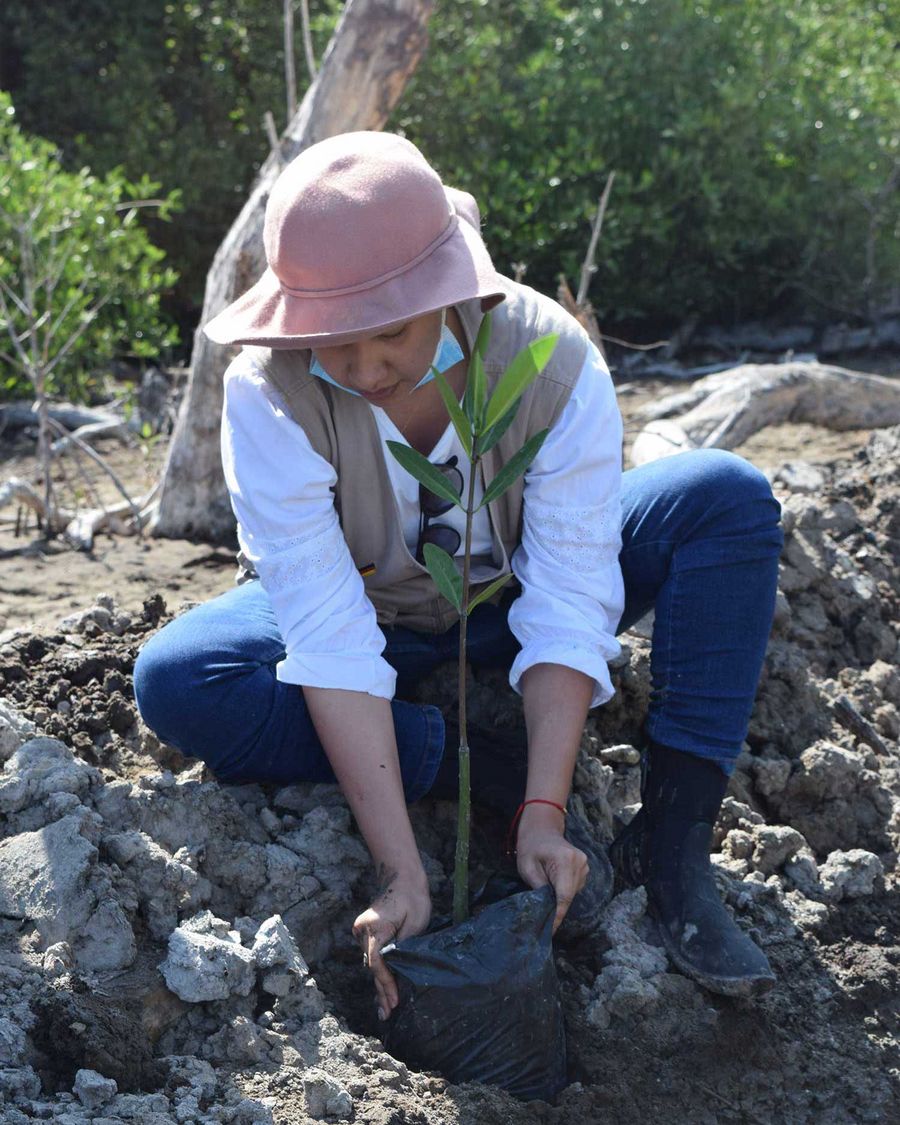
In Isla del Rosario, the ingenuity of the local population is of great importance. Our work in environmental awareness includes testing an innovative solution to recycle all the waste brought by the currents of the lagoon. CRIAPEZ has worked with the University of Magdalena and the Instituto de Investigaciones Marinas y Costeras (INVEMAR), a research institute that studies the marine and coastal ecosystem, to develop a "water bike" that picks up and cleans all waste from the Cienaga. The organization also makes bricks that are 50% plastic, 25% sand and 25% cement. The bricks are extremely light, weighing only 900 grams.
Local entrepreneurs like to dream big. "We have already developed other ideas, including a floating restaurant," says Manuel Francisco Lopez Orga, vice president of CRIAPEZ. "We will take visitors and visitors on a tour of the mangroves and then offer them refreshments in the floating restaurant. Eventually, we might even serve food here. Alvaro - a friend of mine - is a chef and can prepare typical dishes from the region. That's our dream, but we need more support to realize these ideas."
Entrepreneurship, innovation and courage are the words that come to mind when you meet the founding members of CRIAPEZ. Despite their limited resources, their commitment to preserving the environment is unwavering, as is their will to find innovative solutions to their problems. Just as the plants of the Cienaga bend and adapt easily to sudden changes in the ecosystem, so too are the residents willing to change and innovate. They are wary of being labeled project "beneficiaries," a term often used in humanitarian aid and development cooperation to describe a person who benefits from an organization's projects.
"We bring ancestral and empirical knowledge, and we are leaders and representatives of the fishing community. Don't call us beneficiaries, call us allies. We bring knowledge and our best to the table!"
Our relief projects at Malteser International take a participatory approach, always involving local communities in testing solutions to ensure that our efforts are as sustainable as possible. Relief projects that do not take the local population into account would only be half as effective.
Malteser International will continue to be an ally of local communities, ensuring that people in need can lead a life in health and dignity.
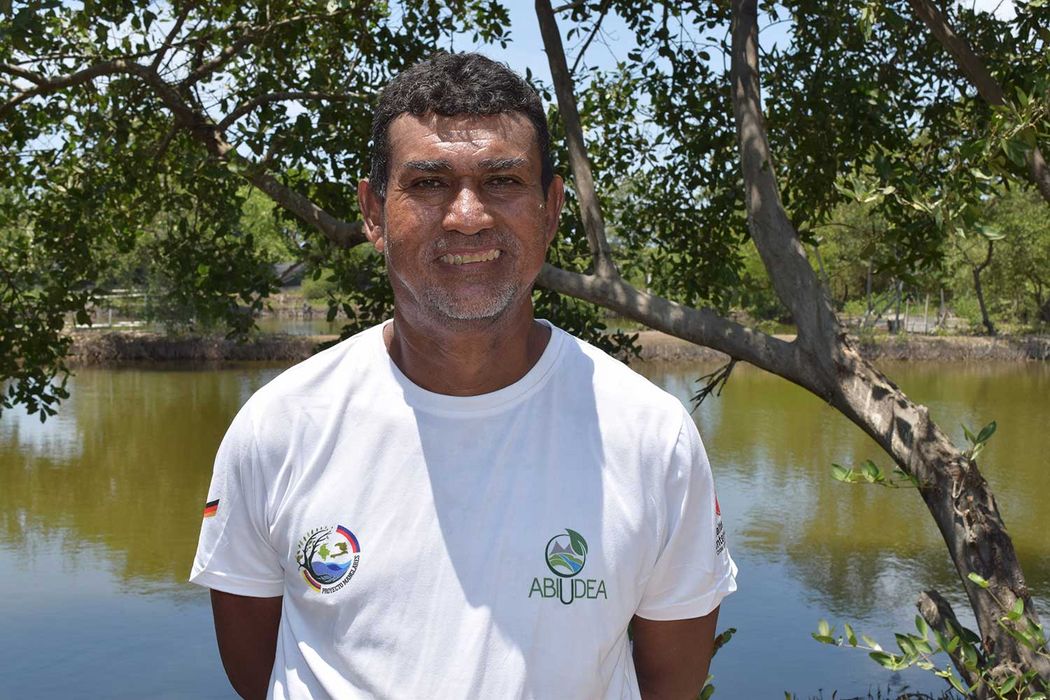
"The dream of sustainable ecotourism through the use of mangrove trails is the future. In this community, we have the resources to continue working on this project and my younger relatives are all aware that this is the future!"
Manuel Francisco Lopez Orga, Vice President of CRIAPEZ








